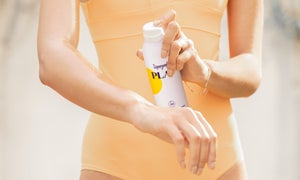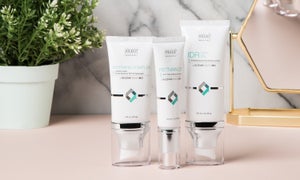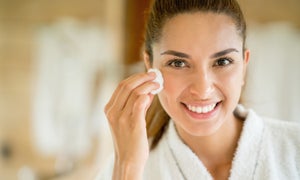
The new year is a natural time of renewal, and the perfect moment to set goals around everything from your career to your relationships to your self-care routine. The new year is also an excellent time to think about skin renewal. In this edition of our Doctor’s Office series, Dr. Suzan Obagi, a board-certified dermatologist and cosmetic surgeon and founder of the SUZANOBAGIMD line of scientifically formulated products, explains how the right skin care routine—even more than in-office procedures—can help give your skin a fresh start.
Many people ask me why the skin changes so drastically as we age and I have two answers: First, it’s all a matter of how our skin cells function—and lose function—over time. And second, it’s a reflection of how much care we take to correct underlying damage and prevent ongoing damage with a quality and consistent skin care routine.
The Science of Skin Aging
Up until about 18 years of age, the different types of cells are all working to keep skin looking youthful.
Keratinocytes (which make up close to 90% of the cells in the epidermis) make their way from the basal layer of our skin to the top, stratum corneum layer and then slough off. At the same time, melanocytes (melanin-producing cells), are making a nice, even skin color. All the while, fibroblasts (connective tissue cells) produce an abundant amount of collagen, elastin and glycosaminoglycans (or GAGs), making our youthful skin firm, elastic and plump.
And then the changes begin. After age 18, keratinocyte turnover declines, and these cells can begin to show accumulated damage from pollution, sun and smoking. Melanocytes may become overactive, leading to melasma or sunspots and freckles. And the fibroblasts begin to produce about 1% less collagen, elastin and GAGs per year, making skin thinner, looser and drier. Our skin’s ability to heal from injuries also slows down as we age.
Rejuvenation Starts Here
So, what can be done to reverse some of these changes? One option is in-office procedures, which can address the “four R’s” of rejuvenation:
Relax overactive muscles with neuromodulators, such as Botox/Dysport
Refill lost volume with soft tissue fillers or autologous fat augmentation
Resurface skin (to address sun damage, wrinkles, scars) with a peel or laser procedure
Re-drape lax skin with non-invasive tightening or surgical lifting procedures
While younger patients may not need all four R’s, at some point in time, they will need a treatment from each category to continue to look their best.
Results of these less invasive procedures can be enhanced by preparing the skin with a well-designed skin care regimen, thus taking the results up a notch. But patients will quickly learn that procedures aren’t enough on their own. If nothing is done to maintain their glowing results, these results will slowly diminish and improvement will be lost. Hence, I propose the fifth and final R: Renewal. You must keep the skin renewing itself so that you can maintain the results that you have achieved.
Renewal consists of a well-designed skincare regimen that keeps the keratinocytes turning over properly, controls the melanocytes to normalize skin color and stimulates the fibroblasts to produce collagen, elastin and GAGs.
Your Renewal Toolkit
A well-designed skin care regimen should contain the following ingredients:
Retinoids to increase keratinocyte turnover, improve the distribution of the melanocytes within the epidermis and stimulate the fibroblasts to make collagen, elastin and GAGs.
Antioxidants to protect against the constant attack on skin cells by environmental pollution, smoking and all forms of light (ultraviolet radiation, high energy visible light, visible light and infrared radiation). These harmful rays cause oxidation within the cells, which contributes to aging.
Alpha-hydroxy acids (AHAs) and polyhydroxy acids (PHAs) to help gently exfoliate dead skin layers, stimulating skin turnover. They also break the bonds between keratinocytes, allowing topical agents to better penetrate into the skin.
Tyrosinase inhibitors and other pigmentation-controlling agents continue to normalize skin pigmentation for a more even skin tone.
Broad-spectrum sunscreens with iron oxides, antioxidants and active mineral ingredients protect against damaging light rays.
There is no quick and easy way to slow down the effects of aging. It takes consistency and diligence, and your skin care regimen is the most important aspect of your overall anti-aging plan. If your skin feels rough, has uneven pigmentation and is not feeling firm, consider first that your skin care regimen likely needs a tune-up before turning to an in-office procedure, which should be considered an occasional—as well as welcome and effective—boost.

Related Articles




